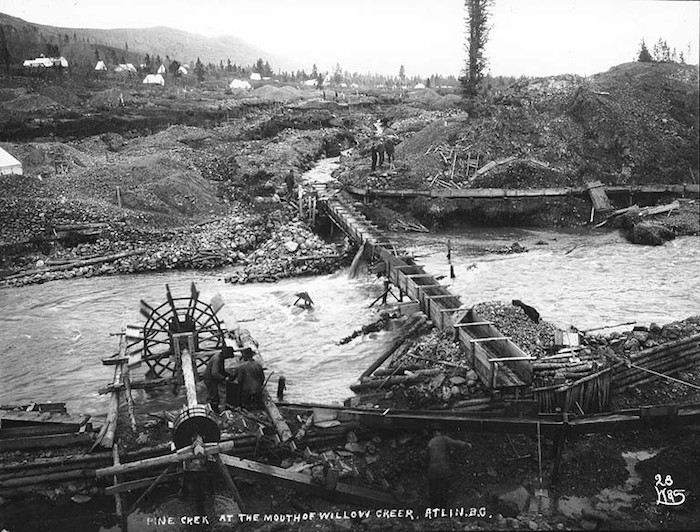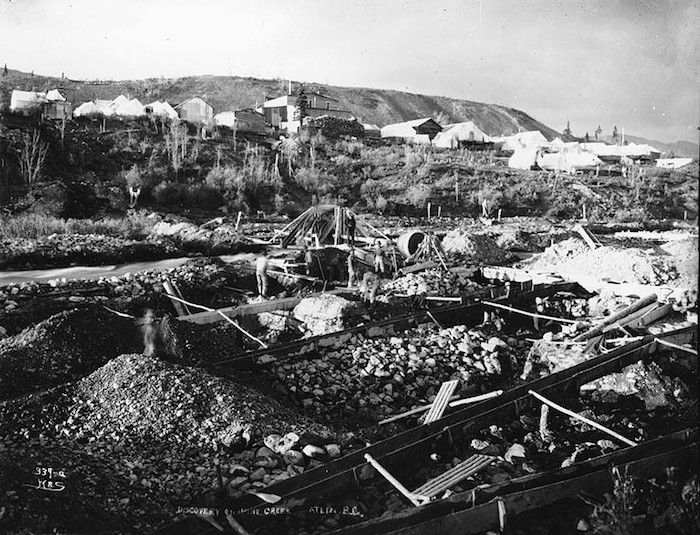
The small town of Atlin, British Columbia is the location of one of the most important gold mining centers in Canadian history. While the first discover of gold in the British Columbia region occurred in 1857, it was not until the great Atlin Gold Rush of 1898 did the town grow in popularity thanks to its gold. As one of the biggest offshoots of the Klondike Gold Rush, the Atlin Gold Rush demonstrated just how the presence of gold could change a sleepy, little town into a major center if only for a little while.
Although gold had been discovered in British Columbia as early as 1857 with subsequent discoveries in different locations running up to the 1870s, there was not a huge gold rush to the region at that time. The remote location and difficult terrain made many sections of British Columbia rather hostile towards the mining of gold.
In fact, no significant discoveries were made after 1873 which made it seem like the gold in the area had been thoroughly mined. That all changed in 1898 when the Klondike Gold Rush occurred. With thousands upon thousands of prospectors heading towards the Alaskan frontier, there was a renewed interest in the mining of gold in British Columbia.
At the same time, two men were searching for gold along Pine Creek which is very near Atlin and made the discovery of gold that would change the town forever. From the records, it appears that they made their discover in January of that year, but the news only filtered out later that year as the Klondike Gold Rush went into full swing. By the following year, nearly 5,000 prospectors had flooded into Atlin to search along Pine Creek.

Early on, most of the shallow, easy to find gold deposits were thoroughly cleaned out which left the rest of the gold to be discovered in the deep ground. The combination of the difficult terrain and harsh conditions forced many miners to quit while others joined together in their efforts to mine the gold. By 1900, hydraulic mining operations were begun to help clear away the soil and find the gold. During that same time, gold mining was expanded from Pine Creek to reach the Birch and Spruce Creeks as well.
By 1905, the hydraulic mining was such as success that a dam was built at the mouth of Surprise Lake in 1905 which actually increased the amount of water that could be used for mining. Over the next 25 years, hydraulic mining of this area continued. While mechanized mining efforts which included dredging Pine Creek proved unsuccessful, the use of a steam shovel operation in 1906 did find a considerable amount of gold.
By 1930, the mining activity in the Atlin region slowed down considerably. Also, due to the rather exotic location of Atlin, the town was earning money as a tourist destination. However, by 1934 the price of gold increased dramatically which led to a renewed interest in mining gold which lasted for another 20 years. With the coming of the 1960s, gold mining in the Atlin region slowed to a trickle as much of the gold has already been mined. However, the discovery of gold on Squaw Creek in 1927 is still being mined heavily today.
There is still plenty of gold nuggets coming out of the gravels around Atlin. We have had the pleasure holding several huge nuggets that weighed several ounces up to one that weighed nearly a pound! This area still holds great potential for gold miners.
Next: Gold Prospecting in British Columbia
